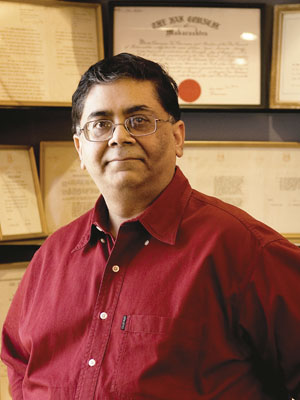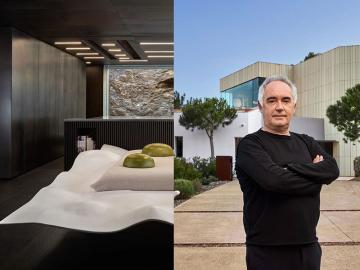
Cyril Shroff: Our Problems Are No Different From Other Growing Firms
What has the firm achieved at this point, what more needs to be done and where broadly do you see yourselves on the spectrum of where you need to get to?
It is work in progress, but I think we’ve covered a lot of ground already. So if you look at it with a historical perspective of a firm with nearly a hundred year tradition, a high quality reputation but fundamentally a compact size, with equity held in one family as a starting point and considering where we moved in terms of the structure we have now put in place, the breadth that has been added, I’d say we’re 50-60 percent down our journey of where we need to go.
It has also had to be reactive in terms of how the environment has been changing. So the environment throws up the opportunities; client situations. The competition also keeps changing every time so you have to keep adjusting to that. The competition is not merely from larger firms but also small breakaways, who compete aggressively on price. Hence the sort of flexibility we have in our structure has allowed us to stay always a little bit ahead of the curve, we think. We might have missed a few steps here and there but by and large we’ve stayed on top of it. The perception of our market standing speaks for itself. We have obviously done something right.
Looking back with satisfaction, we were hardly about 25 – 30 lawyers in the early 90’s. We are now nearly 500 and counting. The firm’s profile both in India and abroad has also increased significantly. We have a lot more systems and processes. We have consistently been voted as the most powerful employment brand for talent. Our partnership is sought after. These are some of the achievements. The challenges are also considerable. The rapid growth imposes stresses on the internal culture and management bandwidth. Especially in our business you cannot just become a manager but have to remain a significant producer as well.
In terms of our future aspiration, it is to remain a leading independent firm. Which would be a number of things — it would be, suppose, a minimum size, a high quality partnership, high performance culture. When you know you’re able to meet the expectations of your clients, both domestic and international, in a comfortable sort of way, you know you’ve achieved a minimum size there. And at some point the constraints of management also give you an indication of “I can’t manage more than this.” To remain self standing and independent even after the market fully liberalises remains a key aspiration. This is called being the national champion. Every major market has one, There is always place for a national champion in every market. It is a good aspiration to have and that is our goal.
Have you reached minimum size yet?
No, not yet. Practically every team in the office is saying I want more resources. I want more senior resources, junior resources. India’s commercial bar seems to be under-lawyered. Clearly the demand for our resources is more than what we’re able to cater to right now. The challenge is in managing size and quality together.
Your vision of the future?
We have a high aspiration. As any market leader aspiring to be national champion should. We really want to do the best work and get the best talent. Be involved as a first port of call for any new thought leadership, whether it’s government-led or private sector-led. We aspire to be the first name to come to mind — ‘when it’s complex, you have to get these guys involved’.
What about global expansion?
o current plans. See, the real question is, do I want to practice Indian law or non-Indian law? Foreign offices would make sense for me if I were to get into non-Indian law. I don’t need to do that. I’m an Indian expert, a large part of the world’s future growth is happening in these markets including India. I need to focus here. Nor do we need marketing offices. I don’t want to go there and become player number 500 in a long list of well-established players. It’ll take a long time for us to scale up over there. We have no desire to practice non-Indian law. We’re very happy with the focus we have. For cross border work, we can seamlessly work with our friends around the globe.
What model have you chosen for the growth and evolution of your firm?
Our choice of model — in terms of structure and working friendships has been thoughtfully formed with obviously long-term intent in mind, and also looking at how other markets have evolved — there were really I’d say three models for us: One, a tie-up with a one-stop shop. Under current regulations it can be just an alliance but we know what the end state of that is. It typically ends up in a merger. And there can be a lot of tension if all your people are not absorbed. Also there is a loss of identity and legacy. The second model is to remain independent but remain “promoterless”, if I may use that word. It is a single engine model. Third is independent with the two-engine theory and form strong non-exclusive friendships with the best-in-class in other markets. So we chose the third model. It made sense for us.
Now why did the first one not work for us? These are not going to just remain alliances for the long term. These are “engagements” which are ultimately going to result in marriage or in divorce. One has to be ready for that sort of outcome. It does not work for us. It may work for others. But not for us. At least that’s how I see it today.
Further, in a market as large as India, where there is an equal supply of domestic and international work, for the top few firms you can sustain yourself pretty comfortably on domestic work for which you don’t need an alliance. On the contrary, a formal alliance can sometimes be a huge hindrance because you could be subjected to global conflicts where a branch of the partner firm with an office in central Europe has conflict with a local client and you have to cut off that relationship. You also lose flexibility to price or to recruit. You would be told that you can’t work for less than 700 dollars per hour — you tell that to an Indian client and he’ll tell you to take a walk! You have to retain that commercial flexibility to price in market. How will somebody sitting 5,000 miles away understand what your pressures here are? There can be loose versions of alliances which may temporarily avoid some of these constraints but not in the long term. And finally, in an exclusive alliance you lose a lot of friends and referrals too. Your income can actually drop.
Model 2: Then we could have chosen to remain independent and promoterless. Independent of foreign alliance… rightly or wrongly, our belief is: For an organisation to maintain a level of high growth and continuously entrepreneurial and to take risks which are disproportionate, you do need a promoter who provides powerful leadership. At least in India. You can remain independent and promoterless, it has nice sort of socialist feel to it… it takes away the perceived feel that it is family owned etc. But what could and would surely have happened is, growth would have completely slowed down and we would have become marginalised and maybe set ourselves up for being merged with somebody else. The profession is strewn with examples where this has happened. No point being independent and not in tier one….implicitly therefore in my view if you want to remain long-term in the tier one there are only two real models to success in India. One is you remain independent, you have this two-engine theory which is what we chose, or you go with a foreign alliance which may also work.
What is your two-engine theory?
I have different names for it. Two wheels of a bicycle, pilot or co-pilot or the two engine theory. Basically, it means that the firm composition is a collaboration between the promoter family and other non-family professionals. Both bring unique strengths to the table and it is this combination which drives the firm forward. All promoter led organisations are essentially two-engine structures. Even the Congress party can be compared to this! The promoter engine brings in a lot more financial and relationship capital in addition to intellectual capital and a strong sense of continuity. Their timeline is generally infinity. This is what gives a unique flavour to such organisations. Some critics may question the applicability of this to professional service organisations. But I disagree. I do not see why it makes a difference because at a certain level such organisations are also businesses. You have to run one to understand this.
How important is the family aspect to your firm’s strategy for growth?
There is a strong commercial rationale and why it is integral to our strategy. There is also a second, “legacy” “heirloom”, the emotional aspect to it. I think it helps you take disproportionate risks. Emotionally it gives you — “I would die for this firm”. It gives you that kind of strong commitment — and people can see you feel it. It is very powerful and inspires strong loyalty.
The second part is how clients connect with it. For instance, many leading industrialists/promoters see me as the flip side of what they are to their organisation. They see this as stable and long-term. There is a certain unstated comfort from that continuity and history. Which is not to say they think all the repository of know how and knowledge is with family. They know it’s a much broader firm with several layers of partners and associates but they see this as hugely stabilising — they would hate it if they said I want to go to firm XYZ and I don’t even know who the main partners are. The founders are dead and gone. Which may be a model that works very well in London or New York but I don’t think it'll work in India. At least in legal services. In India people want to work with a relationship. That relationship is a combination of professional interaction and a social and personal overlay on top of it — before you get to the trusted advisor status.
Two firms within one?
We are ONE firm — one profit pool, it is one brand. My father had handwired the equality principle since inception. He used to call it “two halves of an apple”. Hence our economics are exactly equal between two branches of family. My profit share and Shardul’s is exactly the same. One P&L at the firm level — one profit pool. It is not that profits in Bombay go to my pocket and profits in Delhi go to his pocket — everything goes into a single pot. Separate P&Ls between Delhi and Bombay is just administrative like in any multi-locational firm. All equity partners are part of a single equity partnership.
Operating on day-to-day basis — yes there are varying styles…. Legal services tend to be largely sold geographically — which is why people have multiple offices. We need multiple offices — which means multiple cost centres and profit centres administratively. Market conditions are also sometimes different in each sub-market. I can command, say, rate x in Bombay, but when I go to Bangalore it would be 0.75 x and Delhi might be 9 x. So there are local market conditions because of client composition and competitive environment. Beyond a point you can’t standardise. Whilst we do operate on a daily basis as two different styles and locations. But the underpinnings are common, and we try to achieve as much commonality as possible. The core goals are common. The passion is common. The legacy is common.
And what kind of conflicts does it create in a firm?
This is no different from any other large multi location service organisation. In a multi-office or multi-jurisdiction firm you sometimes have different offices saying ‘Oh I could have charged this fee for the firm at x, why are you selling the same service at 0.9 x?’ Because clients play you off. For instance, I could have a client who has a presence in Bombay and Bangalore and he will come here and tell my partner why are you charging x? I can get the same job done in Bangalore office at 0.75 x. And then we typically tell them please go to our Bangalore office and get it done. Because we’re fine if you do it there too, eventually it comes to the same pool. These are part of the circumstances which drive the perception in the market that there are different profit centres, they operate differently, they work as separate establishments. What you see in terms of these different offices happens in every multi-jurisdictional firm. And firms have a variety of ways in which they deal with it.
Again, sometimes every professional likes to own a client. My client comes to me and I want to do the job for him but suddenly you’re told by somebody from the other office ‘Sorry you can’t because we're doing something else with his competitor or representing on the other side.’ The more successful a firm is, the greater is the problem since they are in demand. We have a conflicts policy and if there’s a grey area it goes to the conflicts resolution committee.
Competition can also exist between two practice areas in the same office. The transactional lawyers and litigators always have a tension. The litigators typically want to sue the corporate clients. The corporate lawyers say don’t you go anywhere near them; once you do we’re blacklisted by the client. That’s always the tension. This tension also makes the firm a fun place too. (laughs)
Why is the Boston Consulting Group coming in?
We are still talking to BCG. To find ways of integrating. When appointed their main mandate is to iron out all office issues and create a common platform for working together — to create that right environment. It might be a combination of processes and some principles. It’s a big thing. It shows our seriousness. We want to stay together. We know we’re becoming larger and a more complicated firm. Pangs of growth!!
-
 Deshmukh
DeshmukhGreat. This gives the internal understanding, how to run the law firm. This interview shows why this Firm is Champion. Inspirational. Thanks
on Nov 26, 2013















